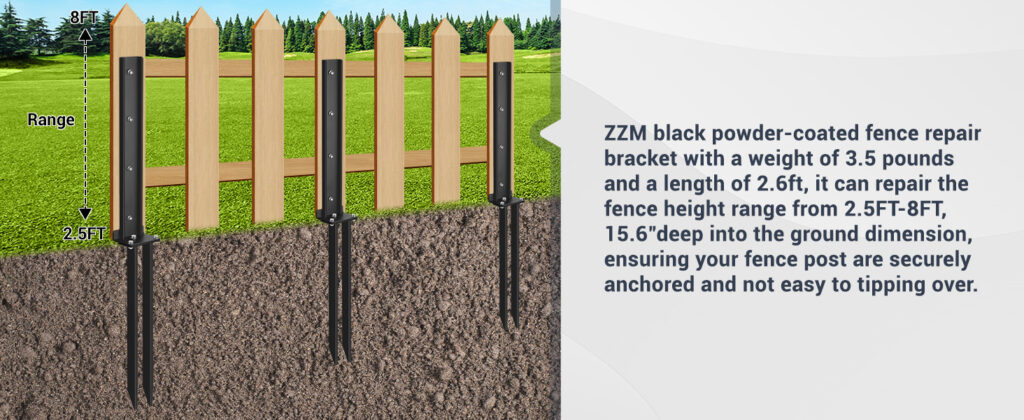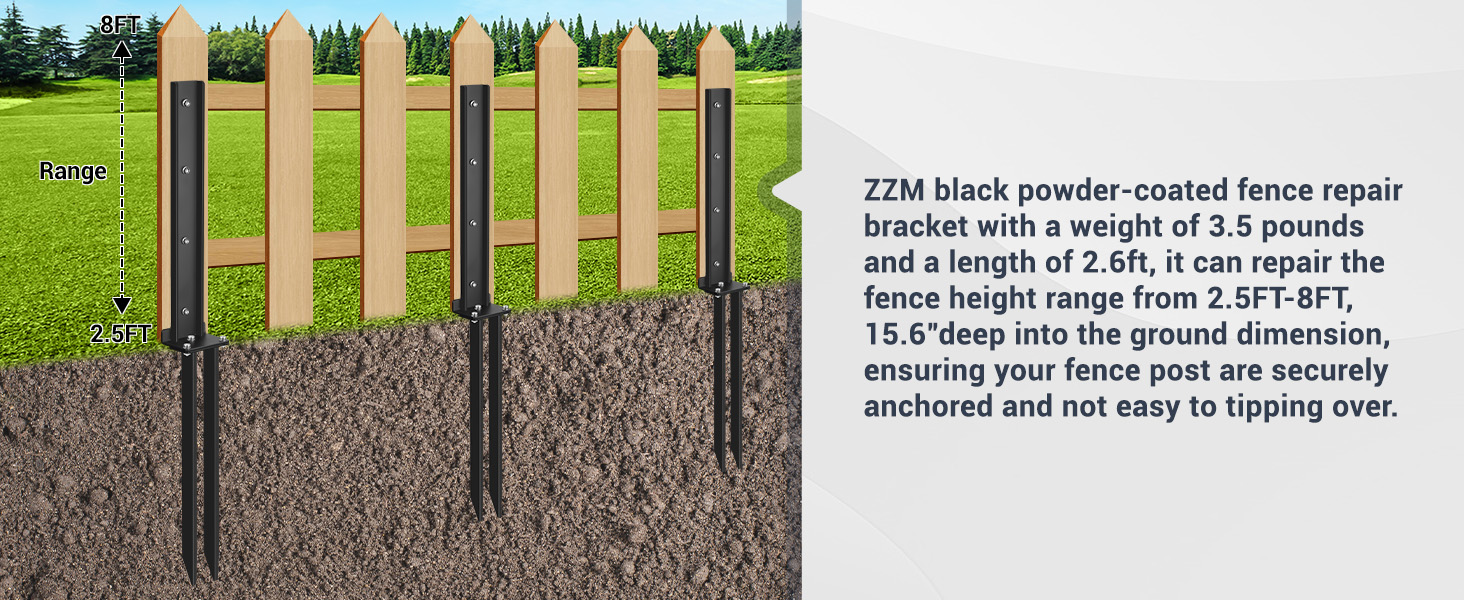
Understanding Stake Fence Posts: A Comprehensive Guide
When it comes to erecting a fence, the importance of reliable and durable stake fence posts cannot be overstated. These posts form the backbone of any fencing system, providing the necessary support and stability to keep your fence upright and functional. Whether you’re securing a garden, defining property lines, or containing livestock, choosing the right stake fence posts is a critical decision. This comprehensive guide will delve into the various aspects of stake fence posts, including materials, types, installation, maintenance, and factors to consider when making your selection.
Why Stake Fence Posts Matter
Stake fence posts are not just pieces of wood or metal stuck in the ground. They are the foundation upon which your entire fence rests. The strength and durability of these posts directly impact the longevity and effectiveness of your fence. A poorly chosen or improperly installed stake fence post can lead to sagging, leaning, or even complete fence failure, resulting in costly repairs and potential security breaches.
Properly installed stake fence posts ensure that your fence can withstand various environmental factors, such as wind, rain, snow, and soil movement. They also provide a visual barrier, enhancing the aesthetic appeal of your property and increasing its overall value.
Types of Stake Fence Posts
Stake fence posts come in a variety of materials and designs, each with its own advantages and disadvantages. Understanding the different types of posts available will help you make an informed decision based on your specific needs and budget.
Wooden Stake Fence Posts
Wooden stake fence posts are a classic and popular choice for many fencing projects. They offer a natural look and can be easily customized to match the aesthetic of your property. Common types of wood used for stake fence posts include:
- Pressure-Treated Pine: This is a cost-effective option that is treated with chemicals to resist rot, decay, and insect infestation. Pressure-treated pine is suitable for a wide range of applications and offers a good balance of durability and affordability.
- Cedar: Cedar is naturally resistant to decay and insects, making it a long-lasting and low-maintenance option. It has a distinctive reddish-brown color and a pleasant aroma, adding to its aesthetic appeal.
- Redwood: Similar to cedar, redwood is naturally durable and resistant to the elements. It is known for its rich color and smooth texture, making it a premium choice for high-end fencing projects.
Metal Stake Fence Posts
Metal stake fence posts are known for their strength, durability, and resistance to the elements. They are a popular choice for security fences, agricultural fencing, and other applications where strength and longevity are paramount. Common types of metal stake fence posts include:
- Steel: Steel stake fence posts are incredibly strong and can withstand significant impact and pressure. They are typically galvanized or powder-coated to prevent rust and corrosion.
- Aluminum: Aluminum stake fence posts are lightweight, rust-resistant, and easy to install. They are a good choice for fences in coastal areas or other environments where corrosion is a concern.
Composite Stake Fence Posts
Composite stake fence posts are made from a combination of wood fibers and recycled plastic. They offer the look and feel of wood but are more resistant to rot, decay, and insects. Composite posts are a low-maintenance option that can last for many years without requiring painting or staining. [See also: Composite Fencing vs. Wood Fencing]
Factors to Consider When Choosing Stake Fence Posts
Selecting the right stake fence posts for your project requires careful consideration of several factors, including:
- Soil Type: The type of soil in your area can significantly impact the stability of your fence. Sandy soils may require longer posts or additional support to prevent them from shifting or sinking. Clay soils can retain moisture, which can lead to rot and decay in wooden posts.
- Climate: The climate in your area can also affect the lifespan of your stake fence posts. Areas with high humidity or frequent rainfall may require posts that are more resistant to moisture damage. Areas with strong winds may require stronger posts that can withstand the pressure.
- Fence Height: The height of your fence will determine the length and strength of the stake fence posts you need. Taller fences require longer and stronger posts to provide adequate support.
- Budget: The cost of stake fence posts can vary significantly depending on the material and size. Consider your budget when making your selection and choose posts that offer the best value for your money.
- Aesthetic Preferences: The appearance of your stake fence posts can impact the overall aesthetic of your property. Choose posts that complement the style of your home and landscaping.
Installing Stake Fence Posts
Proper installation is crucial for the stability and longevity of your fence. Here are some general steps for installing stake fence posts:
- Plan Your Fence Layout: Before you start digging, plan the layout of your fence and mark the locations of the stake fence posts. Use a string line to ensure that the posts are aligned correctly.
- Dig Post Holes: Dig post holes that are deep enough to provide adequate support for the fence. The depth of the holes will depend on the height of the fence and the type of soil. A general rule of thumb is to dig holes that are one-third to one-half the length of the post.
- Set the Posts: Place the stake fence posts in the holes and use a level to ensure that they are plumb. Backfill the holes with concrete or gravel to provide stability.
- Secure the Fence: Once the concrete or gravel has set, attach the fence panels or rails to the stake fence posts using nails, screws, or brackets.
Maintaining Stake Fence Posts
Regular maintenance can extend the lifespan of your stake fence posts and prevent costly repairs. Here are some tips for maintaining your fence posts:
- Inspect Regularly: Inspect your stake fence posts regularly for signs of damage, such as rot, decay, or insect infestation.
- Treat Wooden Posts: Treat wooden posts with a wood preservative every few years to protect them from the elements.
- Repair Damage: Repair any damage to your stake fence posts promptly to prevent it from spreading.
- Clear Vegetation: Clear vegetation around the base of the posts to prevent moisture buildup and promote airflow.
Cost Considerations for Stake Fence Posts
The cost of stake fence posts can vary widely depending on the material, size, and quantity you need. Wooden posts are generally less expensive than metal or composite posts, but they may require more maintenance over time. When budgeting for your fencing project, be sure to factor in the cost of the stake fence posts, as well as the cost of installation and any necessary hardware.
Consider the long-term cost of ownership when comparing different types of stake fence posts. While a cheaper option may save you money upfront, it may require more frequent repairs or replacements, ultimately costing you more in the long run. Investing in high-quality stake fence posts can provide peace of mind and ensure that your fence will last for many years to come.
Stake Fence Posts: Enhancing Property Value and Security
Beyond their functional role, stake fence posts contribute significantly to the aesthetic appeal and security of your property. A well-maintained fence with sturdy stake fence posts enhances curb appeal, creating a positive first impression for visitors and potential buyers. Furthermore, a robust fence provides a physical barrier against intruders, deterring unwanted access and safeguarding your property and loved ones.
Choosing the right stake fence posts involves balancing factors like cost, durability, and appearance. By carefully considering your needs and preferences, you can select posts that not only meet your functional requirements but also enhance the overall value and security of your property. Don’t underestimate the importance of quality stake fence posts – they are the silent guardians of your boundary.
Conclusion
Choosing the right stake fence posts is essential for creating a durable, functional, and aesthetically pleasing fence. By understanding the different types of posts available, considering the factors that impact their performance, and following proper installation and maintenance procedures, you can ensure that your fence will provide years of reliable service. Whether you’re a homeowner, a farmer, or a contractor, taking the time to select the right stake fence posts will pay off in the long run.

